With two weeks remaining of summer, and little rain forecast for the time remaining, the wonderful wet season that was supposed to arise from La Niña has not eventuated. Since the start of December, we have only received 70% of the mean summer rainfall for Ipswich, and almost no rain over the past month. It has now been 12 months since our creek last flowed. Despite this, the regular showers we have received have mostly kept things looking relatively green. That is, except for lantana (Lantana camara).
Lantana is often considered one of Australia’s worst weeds, primarily due to its impacts on the pastoral industry. It has been the subject of extensive biological control initiatives, spanning back to 1902, with over 40 different host-specific insects and diseases released in Australia (from their natural range in South America) during the past century. For the most part, these pests have been unsuccessful in curtailing the spread of this weed. This is primarily because lantana loses its leaves in response to frost or drought, and insect populations subsequently crash. In the time it takes for insect populations to recover following rain, lantana is normally able to grow and reproduce. However, the extreme weather patterns we’ve experienced over the past two years appear to have tipped the balance in favour of the insects. Perhaps the severe and extended drought periods weakened lantana more than usual. Perhaps the lack of frosts has allowed insect populations to persist during the winters. Perhaps the timing of rain—almost none during the cooler months, when insect populations are slower to respond—has favoured the proliferation of insects on new lantana growth. Either way, our lantana has remained almost leafless now for two consecutive years, and some patches appear to be dying as a result. Every time it starts to reshoot after rain, a variety of insects (especially the tiny sap-sucking bug Teleonemia scrupulosa) attack and prevent any growth. It will be interesting to see how these dead-looking patches respond when we eventually receive substantial autumn or winter rain for the first time in several years.


Speaking of insects, I’ve managed to photograph a couple of new butterflies on our property over the past month. Some of these (namely, the Meadow Argus and Evening Brown) are locally common, but I had simply not gotten around to posting photos of them previously.

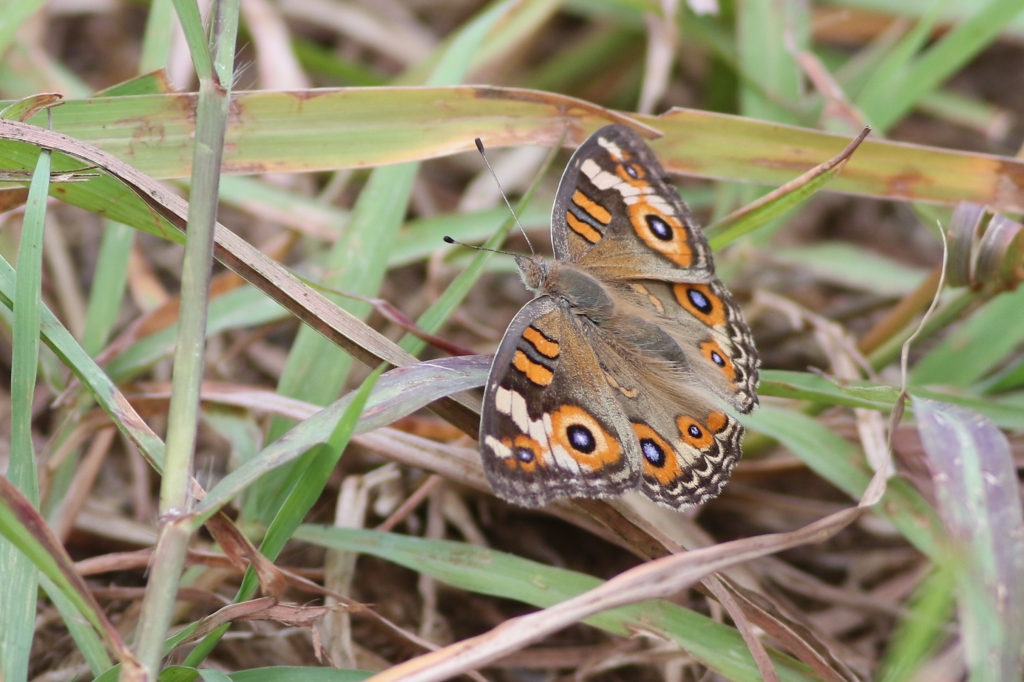
Other species I had not noticed before this year. The first is the Chequered Copper, a small orange butterfly that favours dry, open, stony areas near where its host plant (Oxalis spp.) grows. I inadvertently created ideal habitat for this butterfly when I built my plant nursery, as Oxalis is a common weed that sprouts up in the gravel beneath my racks of plants. Small groups of Chequered Coppers have been sunning themselves on the gravel around the nursery for the past couple of weeks. This species primarily occurs west of the Great Dividing Range, but our ongoing drought has obviously been to its liking.

The second species I had not before seen at Pine Mountain was another orange-and-brown species, the Leafwing. This large butterfly is quite spectacular when flying, the bright orange upper wings flashing with each wing beat. Unfortunately, the colours are completely concealed when it lands (when I can take a photo). The way the undersides of the wings mimic a dead leaf is equally impressive, though. I saw this butterfly in the remnant vine-scrub along the northern end of Riverside Drive, where it was laying eggs on its host plant, Pseuderanthemum variabile (Love Flower). I am yet to see one at home, despite the host plant occurring there.
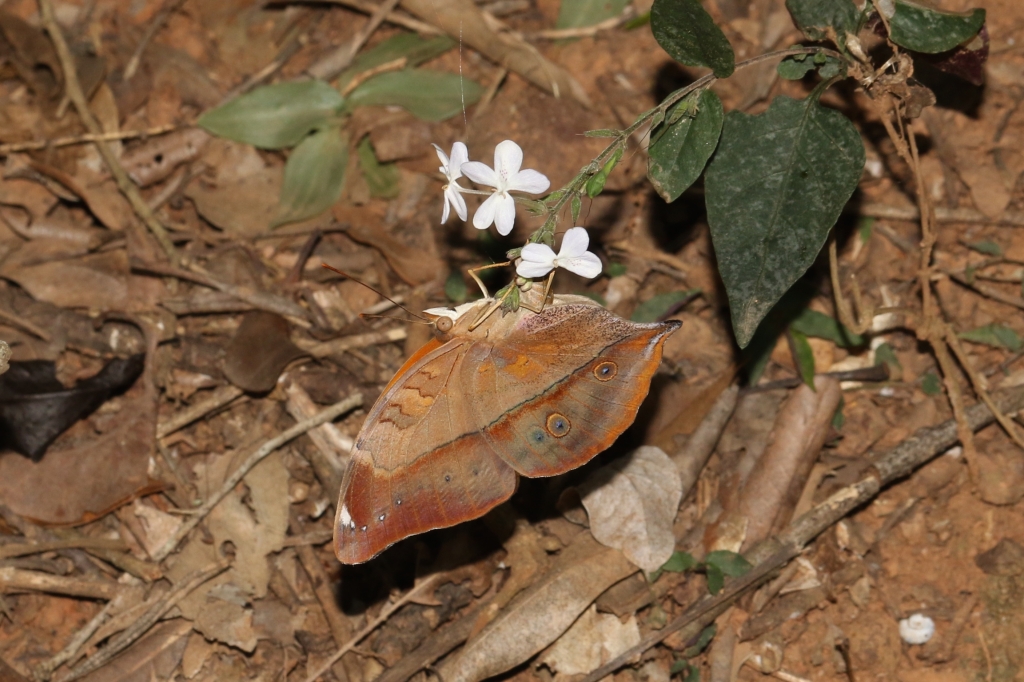
The final butterfly species I am posting this month is a surprisingly common and widespread species, considering how localised its native host plant is. As its name suggests, the Plumbago Blue is a small blue butterfly that breeds exclusively on Plumbago spp. The native Plumbago zeylanica is a locally scarce herb of the vine-scrub understorey. It occurs in small colonies mostly in remote parts of Cameron’s Scrub, where it has yet to be smothered out by Coral Berry (Rivina humilis) and other understorey weeds. I have planted some of this plant at home, where (in the absence of weeds) it has spread to form a large colony. Plumbago Blues are always in attendance of this patch. This butterfly has undoubtedly benefited from the popularity of the South African Plumbago (P. auriculata) in suburban gardens, which allows large populations of Plumbago Blues to colonise our cities and towns.
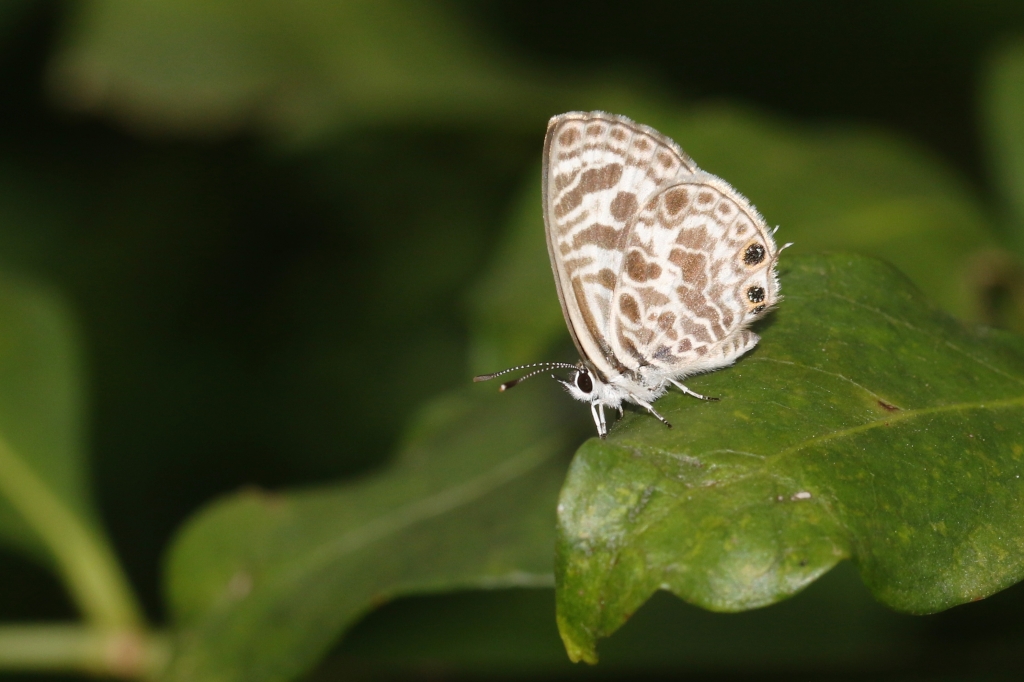

I have noticed that adult Plumbago Blues surprisingly love to feed on the prickly, native herb Nyssanthes diffusa (with the unfortunate common name of Barbwire Weed). The reason this was surprising to me was that the flowers of N. diffusa are so small and hidden among spiky green bracts, they are barely noticeable. Yet, this unlikely plant is always teaming with moths and small butterflies, so must produce decent crops of nectar within those tiny flowers. For some reason, it never seems to be touched by bees.
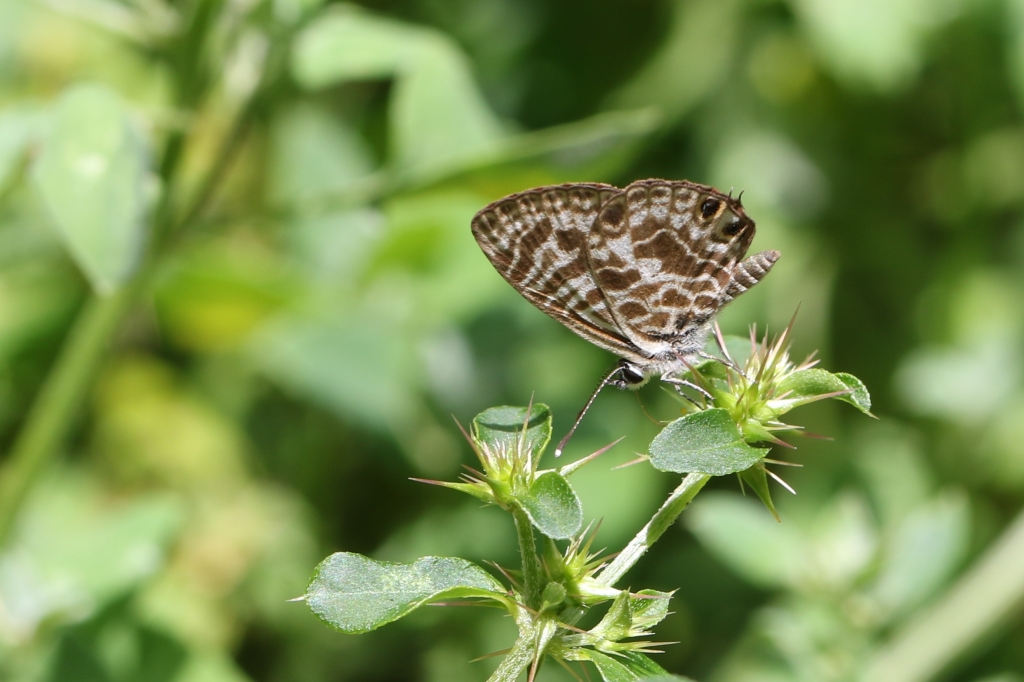
In buttonquail news, our female has been making regular appearances in front of our cameras, but not the male and chicks. I suspect once the chicks hatch, the male moves them away from the nest area. The male was caught on camera once over the past three weeks, but only at the edge of the camera’s field of view. At least one chick remained with him, but there may have been more out of view. The chick was approximately three weeks old at the time of the video footage, and was already well feathered and almost as large as the male. It was still making its juvenile begging calls, though, so was still dependent on the father for food.
In other baby news, our Bearded Dragon eggs laid beside my nursery for the second year in a row have started to hatch. The mother dug a small nest under our shed, but I had doubts about how many eggs would survive when I spotted a Lace Monitor trying to dig the nest out about a month ago. At least two babies have emerged over the past week.

I’ve been trying to find the time to go out spotlighting a bit more than usual over the past month, in search of other reptiles. I haven’t found anything new for the property recently, but this Red-naped Snake is only the third one I’ve come across in my 4.5 years of living at Pine Mountain.

Plant-wise, the dry conditions have meant that there is little in flower or fruit at home right now. The exception is Myrsine variabile, whose purple fruits have been popular with Rose-crowned Fruit-doves.

Last week I had an Ipswich City Council permit to explore some of the more remote parts of Cameron’s Scrub (in the Kholo Enviroplan Reserve). It was interesting to note the different plant species that grow on the sheltered southern slope of Flinton Hill. The slightly cooler, damper microclimate there allowed several species that are more typical of wetter rainforests to grow. Several of these were also in flower and/or fruit, in contrast to more exposed sites facing north or west.

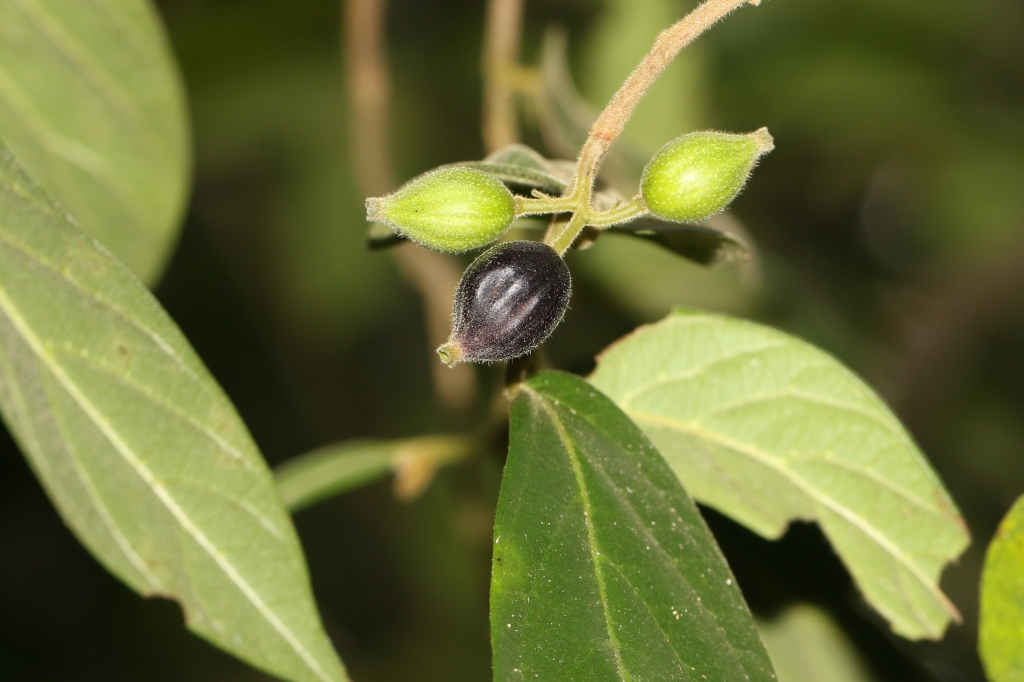
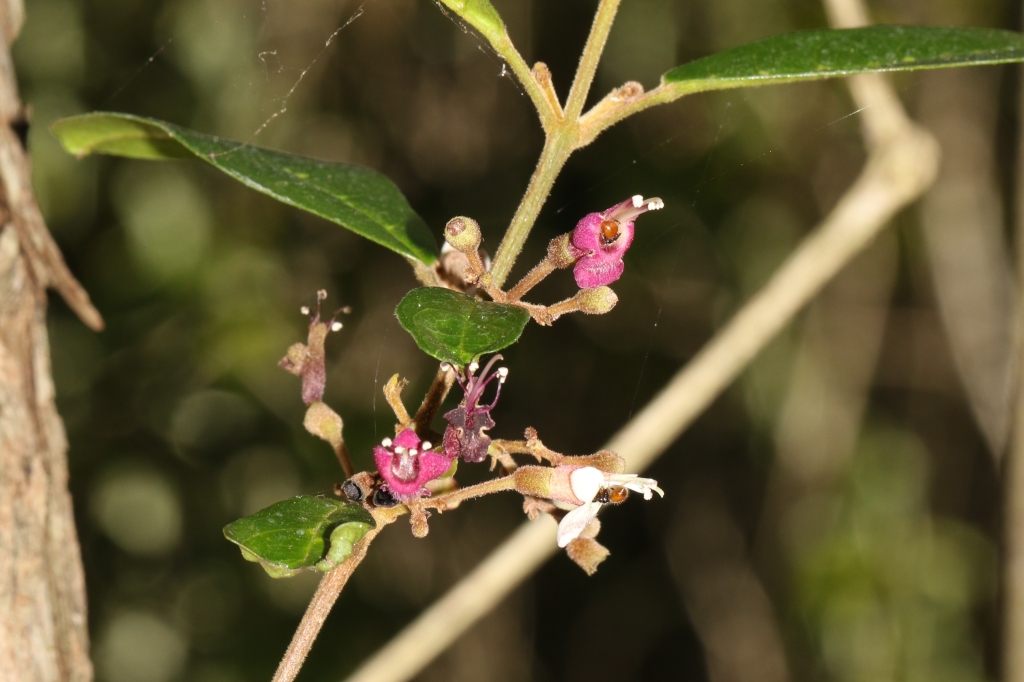
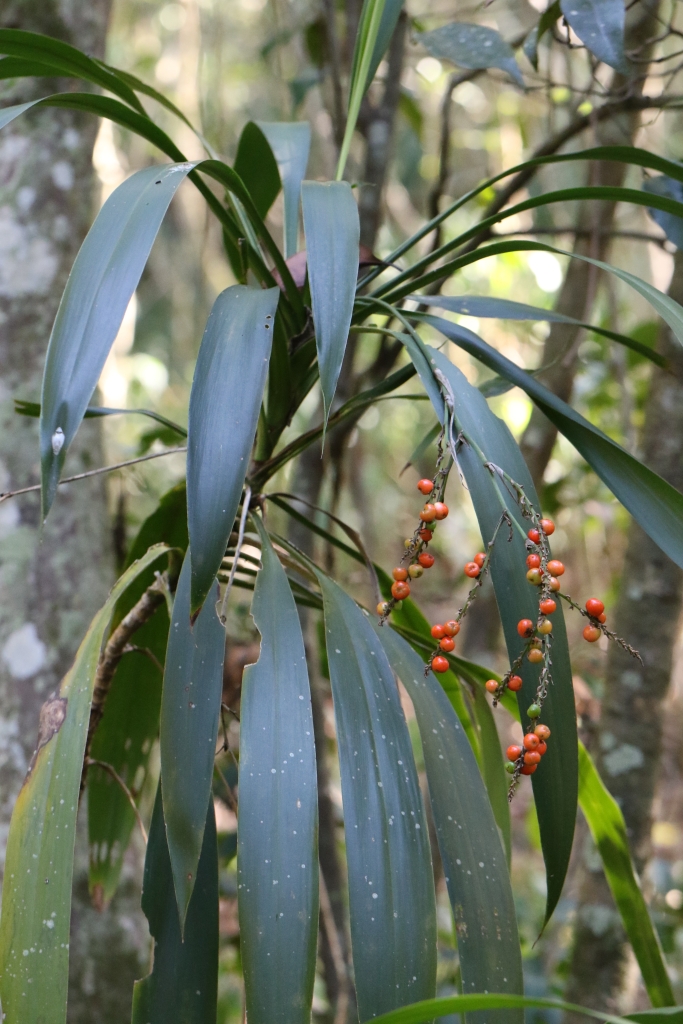

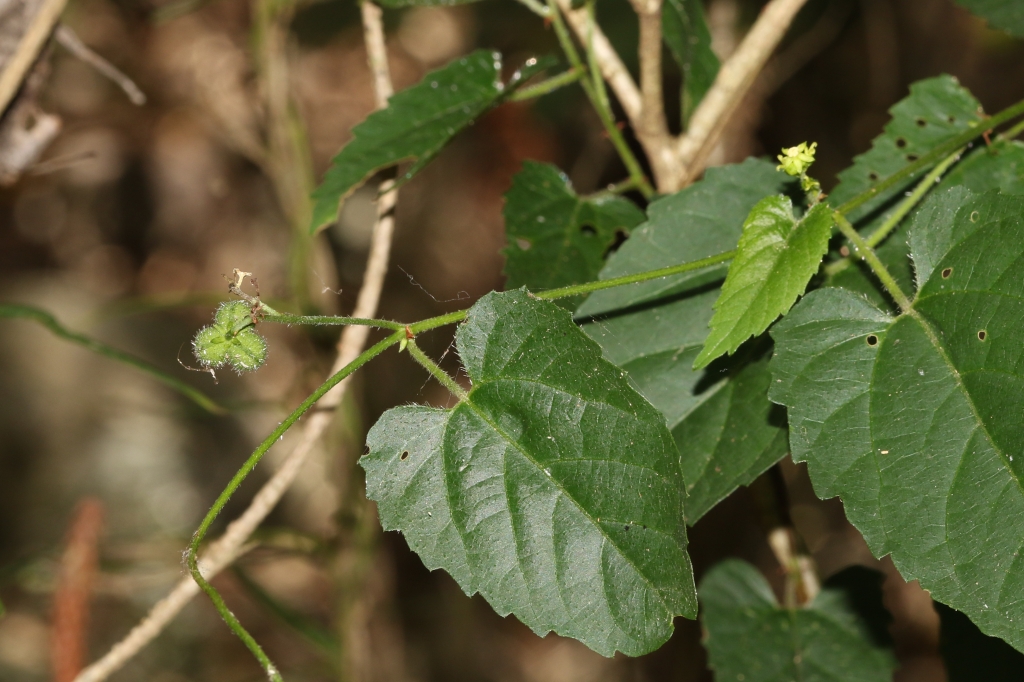


I have a council permit to explore different sections of Cameron’s Scrub throughout this year, so am looking forward to investigating what other interesting plants grow in other remote parts of the Kholo Enviroplan Reserve. My ultimate aim is to plant populations of all local vine-scrub plants on our property, so finding new species growing locally expands my target!
[…] has almost completely recovered from the mass die-off observed last summer (described in this previous post). I estimate less than 10% actually died, and most regrew from the base once the rain […]
LikeLike